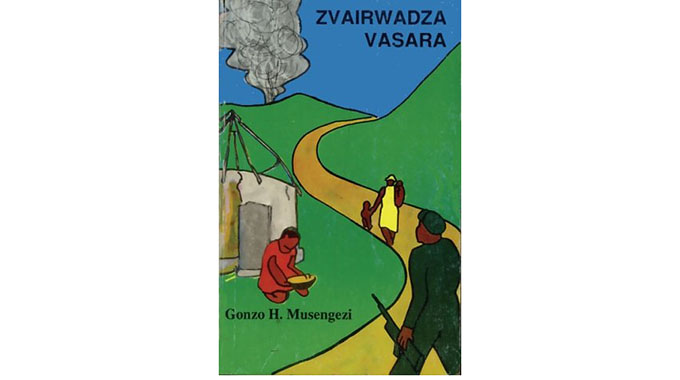Seeking solace, hope in ‘The Fading Sun’
Elliot Ziwira @ The Book Store
“THERE is a time for everything, and a season for every activity under the heavens: a time to be born and a time to die, a time to plant and a time to uproot, a time to kill and a time to heal, a time to tear down and a time to build, a time to weep and a time to laugh, a time to mourn and a time to dance,” so says the philosopher in the book of “Ecclesiastes” 3 v 1-4. Indeed gentle reader, time is the leveller, otherwise all human toils would be in vain if the knowledge that the sun would rise again once it sets was not steeped in our daily witness to its setting.
There is so much hope in the setting sun and much more in sunrise, for each day that comes in the wake of our dreams is always different from the other.
There is much to aspire for in sleeping if we know that in the morrow, we will wake up to witness the hope-laden rays of the rising sun illuminating our dreams.
Hope, gentle reader, is the elixir to the tribulations and gargantuan stones strewn our way, without which the claustrophobia of it all would choke us to death; metaphorically or literally.
What happens then if hope fades and dies away?
In life we live with death, for death, a necessary end, is the beginning of life and that same life ascertains death; such is the nature of things. As unfathomable and vain it is, life still needs to be endured through its seasons, perchance a fruitful one avails itself.
However, to some there are more winters than summers and to others only summers, so it seems. It is this realisation, gentle reader, that the words hurt, suffering and pain, could have been invented just for you and I, which will hoist you as you engross yourself in David S. Mungoshi’s “The Fading Sun” (2009) published by the Lion Press (Ltd).
The book is a touching and thought- provoking rhapsody of a yearning heart that derives solace in the rising sun, which totters towards the western rim where everything seems to end, and yet it is here that all is said to start.
At the peak of it all, fruition appears to be in the offing, but then the sun begins to fade again and abeyance sets in.
Using the metaphor of the fading sun, flashbacks and interior monologues, Mungoshi adeptly gives speech to the gagged and vulnerable voice of womanhood.
Using the omniscient and omnipresent voice of the third person narrator, the writer purveys the story of a woman who appears to carry all the burdens of this world on her fragile and yet resilient shoulders.
The heroine, Mary, finds herself at the deep end, although she is married to an affluent man, Cyril, who pays scant attention to her, despite the condition she is in, which dissipates her emotionally, psychologically and physically.
As the story begins, she is a grandmother in her 60s, and her husband who has now assumed the moniker Moth, also in his 60s, is obsessed with golf, whisky and cigars – the marks of affluence.
She realises that money alone was not all there is to this world, for she married into it but the endless parties of the nouveau riche and their values, fail to move her.
She watches her dream of happiness fading with each sunrise as Moth, whom she also refers to as The-Man-Of-The-House, is obsessed with what he has achieved and gloats in the sunshine, while she moans in the fading sun.
Her situation is exacerbated by the early loss of her ovaries after three close births, and that of one of her breasts to cancer. As she is unable to decipher why the tornadoes seem to be directed only at her frail self, she buries herself in reverie through constant visitations to the past, which she so much cherishes and yet it somehow riles her.
Through flashback, one learns of the many battles that Mary endures, as a girl child, young woman, mother and grandmother.
Having been born into a polygamous marriage, she learns the essence of hard work which catapults her to the apex of her career as a graduate teacher and headmistress of a girls’ school.
The values that she gets from her mother and namesake, Mary, Aunty Chenai as well as those from her father, Mudhara Bodzo, prepares her well for the expectations of matrimony.
Marriage has never been a bed of roses, and Mungoshi does not pretend that it is such, but he is all too conscious of the strains that kill or rekindle it.
It is possible, yes, that two people can fall in love, marry and remain lovebirds even in the face of adversity, as long as they are tolerant to each other’s foibles, supportive of the divergent dreams that may shape their destinies and remain true to their hearts’ desires no matter what Time brings to their doorsteps.
In the protagonist’s case appearances overwhelm the reality on the ground which puts so much pressure on the matrimonial base.
Cyril, the handsome and loving husband who spent many years studying in the United States of America before he marries, climbs up the social ladder.
He buys a beautiful house in Marimba Park, a suburban neighbourhood for affluent blacks in Salisbury. At Independence he is already established as a man of means.
However, success gets to his head and he wants everyone – his wife and children included – to feel that he is the man of the house. The Cyril of yore becomes the conceited, negligent and selfish Moth.
The marriage suffers as a result of deceit, on both parties. Everything seems to be choreographed to suit the pervading set-up of social strata, which somehow tilt in Mary’s disfavour.
Moth is more of a clown than a responsible husband who only honours promises when it suits him.
Mary, on the other hand, takes to feigning everything, even in the bedroom as a way of getting back at her husband’s ego.
As the sun is fading on Mary, it appears to be shining brightly on Moth, whose physical appearance remains as dangerously alluring as ever, notwithstanding his age.
On the other hand, the heroine is fading in almost all faculties. She has lost more than anyone should lose in one smooth swish of the hand of time: ovaries, eyesight, “the definitive feminine attribute”, the man of her dreams as well as her own dreams, which continue to recede to the horizon.
In the prime of their marriage they lose their children, Mary the Third and Darius, to the liberation war.
Although they come back home years after Independence as well- placed civil servants, their departure to the war zone as teenagers marked the death of the family dream, which fails to be resuscitated in the fading sun of Mary’s cosmos.
Although Mungoshi highlights the essence of the liberation struggle and its aftermaths, he somehow questions the integrity of some of the beneficiaries of the fruits of Independence, like Moth, who seem to remain clinging to the colonial minority gravy train, which has been overtaken by events.
Unlike his father, the patriarch, who along with his mother and wife, dies at the hands of Smith’s heinous apparatus at the height of the war because of his nationalist inclinations, Moth believes that the liberation war is a fluke.
It is sad that Mary succumbs to the malignant tumor that ravishes her surviving breast a day before her cherished holiday to the Victoria Falls.
Over the years, Cyril had promised to take her to the Falls, but he always reneged on that promise until time’s hand snatches that dream from his ailing wife’s grasp.
She dies knowing that she is dying because the doctor tells her candidly: “Initial indications are that you could have another two to three months at most.”
She knows that she will “stand by the waterfall and renew a dream” – a dream that will give hope to love – a reverie that will give birth to a new woman, who will be loved not for what she has to offer, but for who she is – one who can still be attractive and adorable even without breasts, one whose aesthetic beauty remains blinding even as age or death’s cold finger play havoc with her.
A woman, whose resilience outpaces that of the queen bee even when everything is skewed against her, is the woman that dies in Moth’s arms on the eve of the Victoria Falls trip that could have rekindled the embers of their dying love.
Such is the story of famished hope, love, marriage and death that David Mungoshi skilfully relates in “The Fading Sun” (2009).









Comments